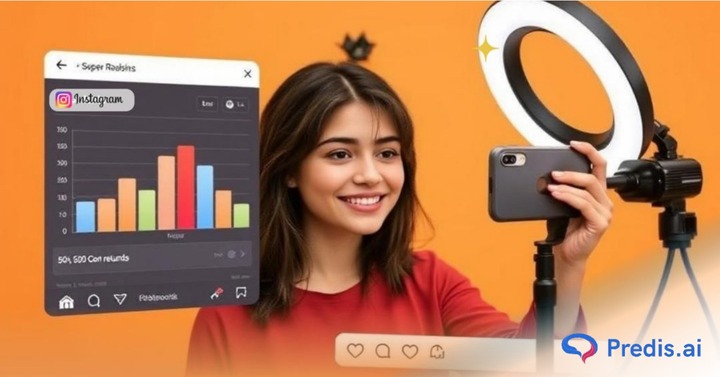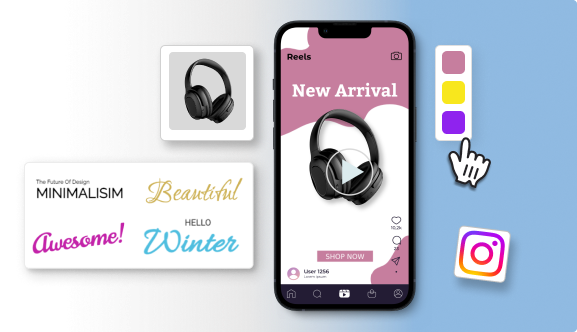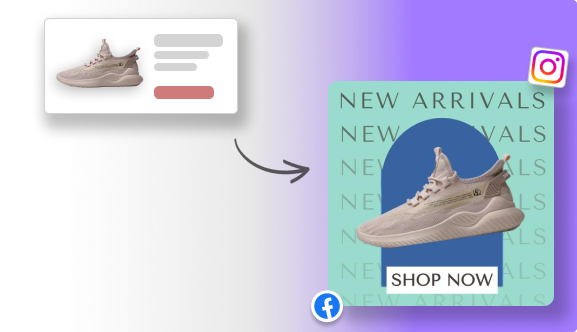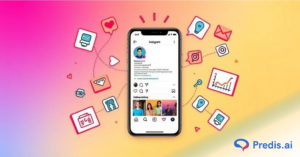Instagram has over 2 billion active users, making it one of the most powerful platforms for digital advertising. But here’s the real question: Are your Instagram ads actually delivering a return on investment or just racking up likes and impressions with no measurable ROI?
Return on Investment (ROI) in the context of Instagram advertising refers to the profit or value you gain from your campaigns compared to what you’ve spent. It’s calculated using the simple formula:
- (Value Received – Investment Made) / Investment Made × 100.
But while the math is simple, tracking the real impact of your Instagram ads requires more than just a calculator. From setting clear campaign goals to using the right metrics and tools, every step counts.
In this blog, we’ll show you exactly how to measure the ROI of your Instagram ad campaign using accurate Instagram statistics, conversion tracking, and strategic analysis. You’ll learn which metrics truly matter, what tools can support your evaluation, and how to turn raw insights into better-performing campaigns.
Why Measuring Instagram ROI is Challenging
If you’ve ever tried to measure the ROI of your Instagram ad campaign, you’ve likely discovered it’s not as straightforward as plugging numbers into a formula. While the concept of ROI is simple, tracking real returns from Instagram ads can be complex due to several unique challenges.
1. Lack of Direct Purchase Attribution Within Instagram
Instagram is a highly visual and engaging platform, but it often doesn’t provide a clear path from ad to purchase, especially for brands without integrated eCommerce setups like Instagram Shopping. If a user clicks an ad, browses your site, and comes back days later to purchase via desktop or another channel, Instagram often gets none of the credit. This disconnect in attribution makes it difficult to know which ads are truly generating revenue.
2. Multi-Channel Customer Journeys
Consumers rarely convert after a single ad view. A user might see your ad on Instagram, Google your brand later, sign up for an email list, and then purchase after receiving a promotional email. These multi-touch, cross-channel journeys blur the lines of attribution, making it challenging to measure the ROI of your Instagram ad campaign with accuracy unless you use robust tracking and attribution models.
3. Differences in Campaign Objectives
Not all Instagram ads are designed to drive direct conversions. Some campaigns aim to build brand awareness, while others focus on engagement or lead generation. Because of this, the definition of “return” varies. A campaign with high engagement but no sales might still be valuable, but how do you quantify that in ROI terms? Measuring the ROI of your Instagram ad campaign means aligning your metrics with your specific goals.
4. The Role of Vanity Metrics vs. Actionable Metrics
It’s easy to get distracted by vanity metrics like likes, followers, and impressions. While these numbers can reflect reach and popularity, they don’t always translate into revenue. Actionable metrics like click-through rates, conversion rates, cost per acquisition (CPA), and return on ad spend (ROAS) are far more important when calculating true ROI. If you’re only tracking surface-level stats, you’ll struggle to measure the ROI of your Instagram ad campaign effectively.
Set Clear Goals Before You Measure
Before you dive into numbers and analytics, the most crucial step to accurately measure the ROI of your Instagram ad campaign is to define your goals. Without clear, measurable objectives, any ROI calculation becomes vague and potentially misleading.
Your campaign goal acts as the foundation for determining which social media metrics matter, how success is defined, and what “return” truly means for your business.
Common Instagram Ad Campaign Objectives:
1. Brand Awareness
If your goal is to increase visibility, you’ll focus on metrics like impressions, reach, and engagement rate. While these don’t directly tie to sales, they help establish your presence and trust—especially important for new brands or product launches. ROI here isn’t about profit but rather exposure gained for your ad spend.
2. Lead Generation
Instagram ads that promote lead magnets (e.g., ebooks, sign-ups, quote forms) should be tracked based on cost per lead and lead quality. In this case, measuring ROI involves identifying how many of those leads turn into paying customers over time.
3. Website Traffic
Some campaigns aim to drive users to a landing page or website. The key metrics here include click-through rate (CTR), bounce rate, and time spent on site. While it’s a top-of-funnel goal, it still provides valuable data for long-term ROI analysis, especially if paired with retargeting.
4. Conversions or Sales
For e-commerce or service-based businesses, the primary goal is often direct sales. This is the most straightforward path to measuring ROI—you’ll track revenue, cost per acquisition (CPA), and return on ad spend ROAS to evaluate how profitable the campaign was.

Metrics That Matter for Measuring ROI
Once your goals are clearly defined, the next step to measure the ROI of your Instagram ad campaign is tracking the right performance metrics. While Instagram offers a variety of insights, not all metrics are equally valuable when it comes to evaluating your return on investment.
Here are the key KPIs (Key Performance Indicators) that truly matter when assessing Instagram ad performance:
1. Cost per Click (CPC)
CPC tells you how much you’re paying for each click on your ad. A lower CPC typically indicates better engagement at a lower cost, which improves your overall ROI—especially for traffic or lead generation campaigns.
Why it matters: It shows how efficiently your ad attracts interest without overspending.
2. Click-Through Rate (CTR)
CTR is the percentage of users who click on your ad after seeing it. A high Instagram Ad CTR suggests that your creative messaging is resonating with your target audience.
Why it matters: CTR is a strong indicator of ad relevance and can help optimize costs and engagement.
3. Conversion Rate
This metric tracks how many users took a desired action—like purchasing a product or signing up—after clicking your ad.
Why it matters: It directly measures the effectiveness of your ad in achieving your campaign objectives and is essential for calculating ROI.
4. Cost per Acquisition (CPA)
CPA refers to how much you’re spending to acquire a single customer or lead.
Why it matters: To measure the ROI of your Instagram ad campaign, knowing how much each conversion costs helps you determine profitability.
5. Return on Ad Spend (ROAS)
ROAS is the revenue earned for every dollar spent on Instagram ads. It’s one of the most direct and useful metrics for understanding the financial return of your campaigns.
Why it matters: A high ROAS means you’re generating more revenue than you’re spending—key to assessing actual campaign success.
6. Engagement Rate
This includes likes, comments, shares, and saves. While often considered a vanity metric, engagement can signal brand interest and contribute to awareness objectives.
Why it matters: High engagement supports brand trust and can increase ad relevance, lowering future CPCs.
7. Customer Lifetime Value (CLV)
CLV estimates the total revenue you can expect from a customer throughout their relationship with your brand.
Why it matters: To truly measure the ROI of your Instagram ad campaign, you need to consider not just the initial sale but the long-term value of acquired customers.
8. Attribution Tracking (First Click vs. Last Click)
Attribution models determine which part of the user journey gets credit for a conversion. First-click attribution gives credit to the first interaction (e.g., an Instagram ad), while last-click attribution gives credit to the final touchpoint before conversion.
Why it matters: Using the right attribution model ensures you’re properly valuing Instagram’s role in multi-touch journeys, giving you a more accurate ROI picture.
Tools to Help You Measure ROI
To effectively measure the ROI of your Instagram ad campaign, you need the right tools both native and third-party, to collect, track, and interpret performance data. These platforms help bridge the gap between ad engagement and actual business outcomes, giving you a clearer view of your return on investment.
1. Meta For Business
Meta Ads Manager is the central hub for managing Instagram and Facebook ads. It offers detailed campaign reports that include reach, impressions, clicks, conversions, cost per result, ROAS, and more.

Why it matters: It provides a comprehensive view of how your ad spend is performing directly on Instagram, making it a foundational tool to measure the ROI of your Instagram ad campaign.
2. Instagram Insights
Available via the Instagram app for Business and Creator accounts, Insights gives performance data on organic and boosted Instagram content creation—such as reach, engagement, profile visits, and website clicks.

Why it matters: While limited for paid campaigns, it complements your ROI analysis by showing how your audience is interacting with your brand beyond ads.
Third-Party Tools for Deeper Analysis
3. Google Analytics
Google Analytics allows you to track user behavior once they land on your website from an Instagram ad. You can monitor bounce rates, session duration, conversions, and the full customer journey.

Why it matters: GA bridges the gap between Instagram traffic and on-site actions, making it essential to measure the ROI of your Instagram ad campaign beyond the platform itself.
4. Ruler Analytics
Ruler Analytics is a marketing attribution tool that tracks user journeys across multiple channels and touchpoints, then matches them to CRM data and closed revenue.

Why it matters: It’s especially useful for B2B and lead-gen campaigns where conversions don’t happen immediately or solely on Instagram.
5. Mention
Mention provides social listening and brand monitoring tools that track engagement and sentiment. It also offers campaign-level insights that tie brand visibility back to ROI.

Why it matters: If brand awareness is your objective, Mention can help quantify your campaign’s reach and perception measurably.
6. UTM Parameters + URL Builders
UTMs are small snippets of code added to your URLs to track the source, medium, and campaign name in Google Analytics. You can create them using Google’s Campaign URL Builder.

Why it matters: Proper UTM tracking is critical to accurately attribute traffic and conversions from Instagram ads, especially when users don’t convert immediately.
How to Measure the ROI of Your Instagram Ads
Now that you know the challenges, goals, metrics, and tools, it’s time to bring it all together. Here’s a practical, step-by-step guide to help you measure the ROI of your Instagram ad campaign with clarity and accuracy.
1. Set Campaign Objectives and Define Your KPIs
Start by identifying what you want to achieve—brand awareness, leads, sales, or traffic. Once the goal is clear, choose specific KPIs that align with that objective (e.g., CTR for traffic, CPA for conversions, ROAS for sales).
2. Track Costs Accurately
Include your total ad spend and any associated costs—such as creative development, copywriting, agency fees, and internal labor. This gives you a complete picture of your investment.
3. Implement UTM Tracking and Pixel Setup
Use UTM parameters to tag URLs and track campaign sources in Google Analytics. Ensure your Meta Pixel is installed correctly on your website to track conversions from Instagram traffic.
4. Collect Performance Data
Use Meta Ads Manager to monitor ad-level performance, and Google Analytics to understand post-click behavior on your site. For advanced tracking, tools like Ruler Analytics help tie customer journeys back to revenue.
5. Attribute Conversions Correctly
Use attribution models (first-click, last-click, linear, etc.) to assign credit to your Instagram ads where it’s due. This is especially important in multi-channel journeys.
6. Calculate ROI Using the Formula
Use the standard formula:
ROI = (Value Gained – Investment Made) / Investment Made × 100
- Value Gained could be total revenue from sales or estimated value from leads.
- Investment Made is your full campaign cost.
7. Analyze and Optimize
Once you’ve calculated ROI, don’t stop there. Dive into your data to find:
- Which creatives performed best
- Which audience segments converted the most
- Where your funnel had drop-offs
8. Calculate Life Time Value
Measuring short-term value is well and good, but it is also important to calculate the lifetime value of your customers. By comparing this with your ad revenue, you can figure out your profit margin better.
Sell More via Instagram 💰
TRY FOR FREEBest practices to keep in mind for maximizing ROI
- A/B test different versions of your ads to find ones that improve ROI. Sometimes, this can be all you need to improve ROI.
- Run retargeting ad campaigns to get the attention of viewers who previously interacted but did not convert.
- Try different ad formats like UGC and influencer ads to see if they bring more ROI.
- Set up a Lookalike audience that shares similar characteristics to your repeat customers
What does the future hold for ROI tracking?
- Meta is ramping up to roll out AI-driven ad optimization features that will help you maximize your ROI.
- The ability to run AR and VR ads is improving. This means you might need to think of ways to track the ROI of these ads in the near future.
- There are advanced attribution models on the horizon that will help you track multi-channel performance better
Conclusion
In today’s competitive digital landscape, it’s not enough to run visually appealing Instagram ads—you need to know if they’re truly driving results. That’s why learning how to measure the ROI of your Instagram ads is critical to long-term marketing success.
By tracking the right metrics, using the right tools, and following a data-driven approach, you gain the clarity needed to make smarter, more strategic decisions. Whether your goal is brand awareness, lead generation, or direct sales, understanding your numbers helps you invest wisely and scale what works.
Now that you know the steps, it’s time to put them into action.
👉 Start tracking and measuring your Instagram ad ROI today—and turn your ad budget into real business growth.
Frequently Asked Questions
The basic ROI formula is:
(Revenue Generated – Ad Spend) / Ad Spend × 100.
For example, if you spent $500 and earned $2,000 from the campaign, your ROI would be 300%.
Yes! ROI isn’t limited to sales. You can also track leads, website visits, app installs, or email sign-ups—while advertising products on Instagram, just make sure your campaign goals are clear and measurable.
Tools you can use include:
1. Meta Ads Manager (built-in campaign reports)
2. Google Analytics (track user behavior & conversions)
3. UTM Parameters (custom URL tracking)
4. Ruler Analytics, Mention, and other third-party platforms for multi-touch attribution
Instagram often plays just one role in the customer journey. Users may engage with your ad but convert later via another channel. That’s why using proper attribution and analytics tools is essential for accurate measurement.
Check the difference below:
1. ROAS (Return on Ad Spend) = Revenue / Ad Spend
2. ROI = (Revenue – Costs) / Costs × 100
3. ROAS focuses solely on ad spend, while ROI takes into account all costs involved, making it a more comprehensive profitability measure.
Ideally, you should track ROI throughout your campaign—weekly or bi-weekly for ongoing campaigns—and always at the end of a campaign to assess overall performance and optimize future strategies.

















